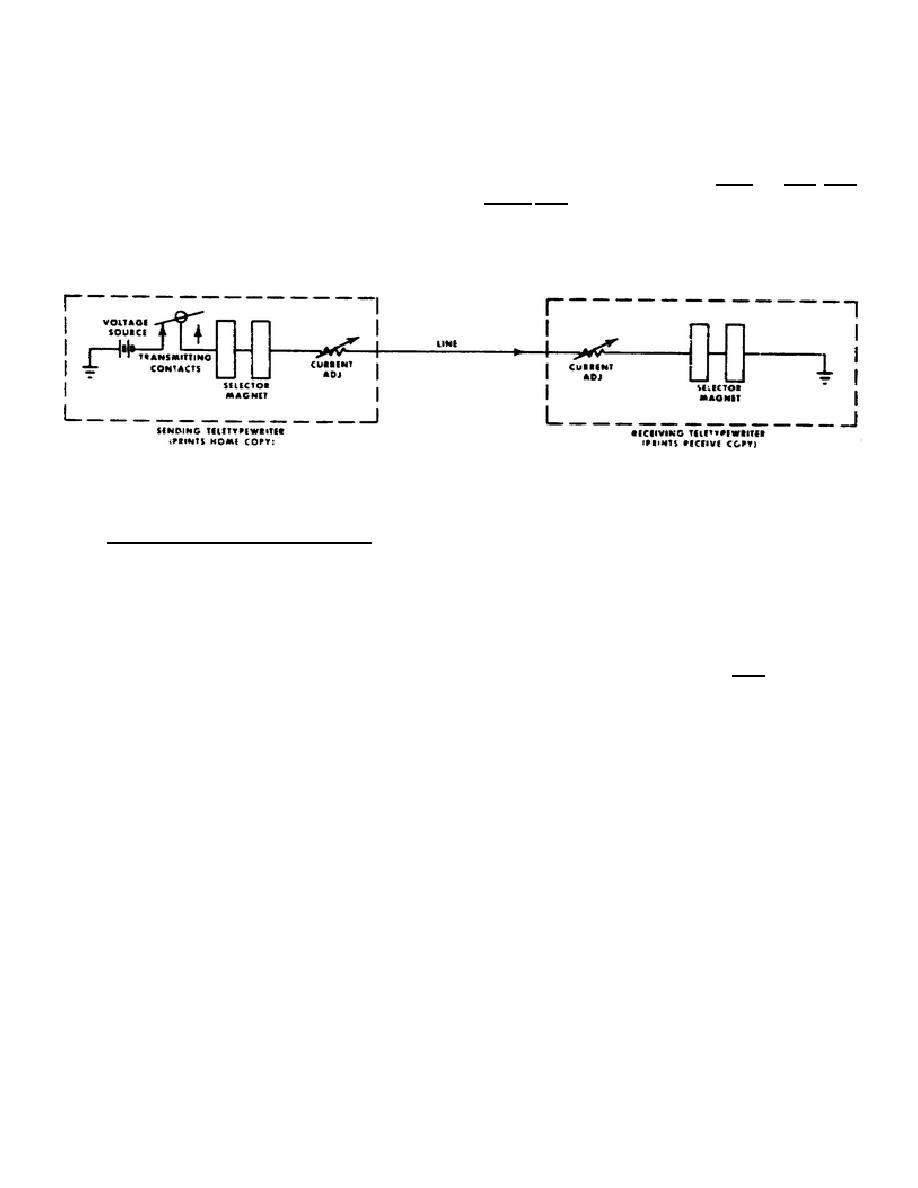
d. Trace the path of current flow in the one-way-only circuit in figure 80. Start at the negative side of the
voltage source. Go, in sequence, through the transmitting contacts of the sending teletypewriter, selector magnet, current
adjust potentiometer, the line, and current adjust potentiometer of the receiving teletypewriter selector magnet, to ground,
up from ground at the sending teletypewriter, and return to voltage source.
e. When the operator sends a message, his teletypewriter prints what is known as home or local copy.
Simultaneously, the receiving teletypewriter automatically prints receive copy.
f. Neutral signals are transmitted over the line in the circuit of figure 80. The mark current is usually adjusted
for 60 milliamperes (ma), although in some equipment other predetermined current values such as 20 ma are used.
FIGURE 80. One-Way Only Teletypewriter
Circuit for Neutral Signals.
85.
The Half-Duplex Teletypewriter Circuit.
a. Figure 81 shows a half-duplex teletypewriter circuit. You can use this circuit to send messages either from
west to east, or from east to west, but not in both directions at the same time. It is a one-way reversible circuit. This
circuit may be used when the volume of message traffic is low.
b. The half-duplex circuit consists of two teletypewriters and the line as in the one-way-only circuit. When you
are sending a message from the west teletypewriter, the transmitting contacts at the east teletypewriter must remain closed
so that you'll have a closed circuit for mark current. At this time, your teletypewriter will print home copy and the east
teletypewriter will print receive copy. When the operator at the east teletypewriter is sending a message to you, your
transmitting contacts must remain closed. At this time, of course, your teletypewriter will print receive copy and the east
teletypewriter will print home copy.
172



 Previous Page
Previous Page
